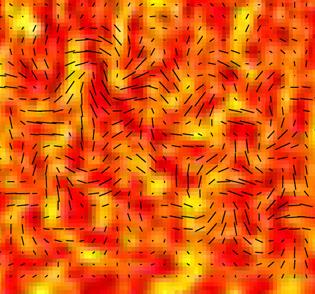US scientists say they have detected ripples in the universe that provide evidence of a massive and rapid inflation in the immediate wake of the Big Bang.
 They also presented data that represent the first images of gravitational waves, or ripples in space-time, often described as the “first tremors of the Big Bang.”
They also presented data that represent the first images of gravitational waves, or ripples in space-time, often described as the “first tremors of the Big Bang.”
The discovery, announced today at a press conference at Harvard-Smithsonian Centre for Astrophysics, also confirms a deep connection between quantum mechanics and general relativity.
It was underpinned by observations of cosmic microwave background from the BICEP2 telescope based at the South Pole.
The SMC gathered reaction to the news. Feel free to use these comments in your reporting. Contact the SMC to talk to any of the scientists quoted or for further information.
Professor Richard Easther, Head of Department of physics at the University of Auckland, comments:
“The word is that the BICEP team has discovered B-modes, specific patterns in the polarisation of the microwave background. B-modes are the “smoking gun” of inflation, and their strength is tied to the energy density of the universe during inflation – if the rumours hold up, we could soon know that inflation DID happen a trillion, trillion, trillionth of a second after the Big Bang, and at energies a trillion times beyond the reach of the Large Hadron Collider.
“There would still be several steps to nailing it down — not all B-mode signals must come from inflation, and not all inflationary models must produce detectable B-modes. And there’s one more thing: the B-mode is sourced by gravitational waves — ripples in the fabric of space — generated during inflation.
“Gravitational waves are a key prediction of Einstein’s General Relativity and their existence is still not conclusively confirmed. Even so, gravitational waves are getting second billing to what we will learn about the early universe: we will know that inflation is a compelling answer to cosmology’s initial-conditions problems, and humankind will have looked directly into the cosmic dawn.
More commentary on Prof. Easther’s blog here.
Comments gathered by our colleagues at the UK Science Media Centre:
Professor John Womersley, Chief Executive of the Science and Technology Facilities Council (STFC) which funds UK research into cosmology, comments:
“Modern cosmology is based on three underlying assumptions – inflation, dark matter and dark energy. We don’t know what any of them actually are, but over the last few years we have seen increasingly strong evidence that they are real.
“Today’s announcement from the Bicep project continues that process. Inflation is the very rapid expansion of the very early universe that is one of the pillars of our understanding of cosmology. Without inflation we would not be here.
“A detection of primordial B-mode polarisation provides very strong evidence for inflation and, if the Bicep results are verified by other experiments, that will be what we have. With the recent confirmation of the existence of the Higgs boson and now the first direct evidence for inflation, these are very exciting times to be a physicist.”
Dr Ed Daw from the University of Sheffield’s Department of Physics and Astronomy comments:
“Gravitational waves emitted at the time of the big bang can tell us how the Universe came to exist. The BICEP experiment has today announced the detection of evidence for these primordial waves. If these results prove correct, we will have new key information on the very early Universe, information that is hard to get from any other source.
“Gravitational waves are a new frontier in astrophysics and cosmology. If today’s findings are accurate then it will further strengthen our understanding of how the Universe formed.”
Dr Chris Lintott, Astrophysicist at the University of Oxford, comments:
“We know the announcement is from the team behind the BICEP experiment, which studies the cosmic microwave background (CMB) from the excellent observing site at the South Pole.
“The CMB is radiation emitted just 400,000 years after the Big Bang, but in this case the really exciting stuff would be evidence of what was happening much earlier. One target for the experiment is spotting the effect on the CMB of gravitational waves that would bear the signature of inflation – a long-postulated sudden expansion of the Universe that happened a ten-million-billion-billion-billionth of a second after its beginning. Finding this would be the most significant cosmological discovery in nearly two decades, and a huge triumph for physics.
“It’s like all our Christmases at once – I doubt many cosmologists will get much sleep tonight.”